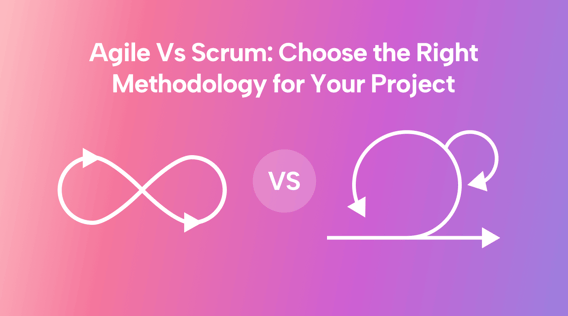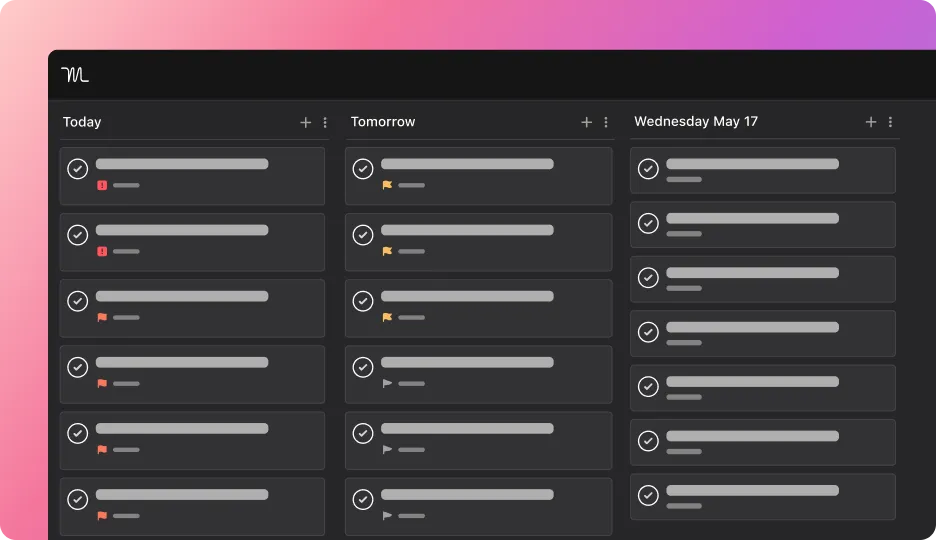Agile and Scrum are terms you've probably heard thrown around in project management. But understanding their differences is crucial.
Scrum is a subset of Agile. Agile is a project management approach emphasizing flexibility, collaboration, and continuous improvement. Scrum focuses on iterative development involving prescribed roles, events, and artifacts.
Let’s explore the key differences between Agile and Scrum and how each can benefit your projects.
What is Agile methodology?
Agile originated from a software development methodology that has evolved and is found in many industries.
It's focused on iterative cycles to deliver working software and products quickly and frequently. Agile prioritizes the delivery of valuable increments of work over longer, comprehensive plans.
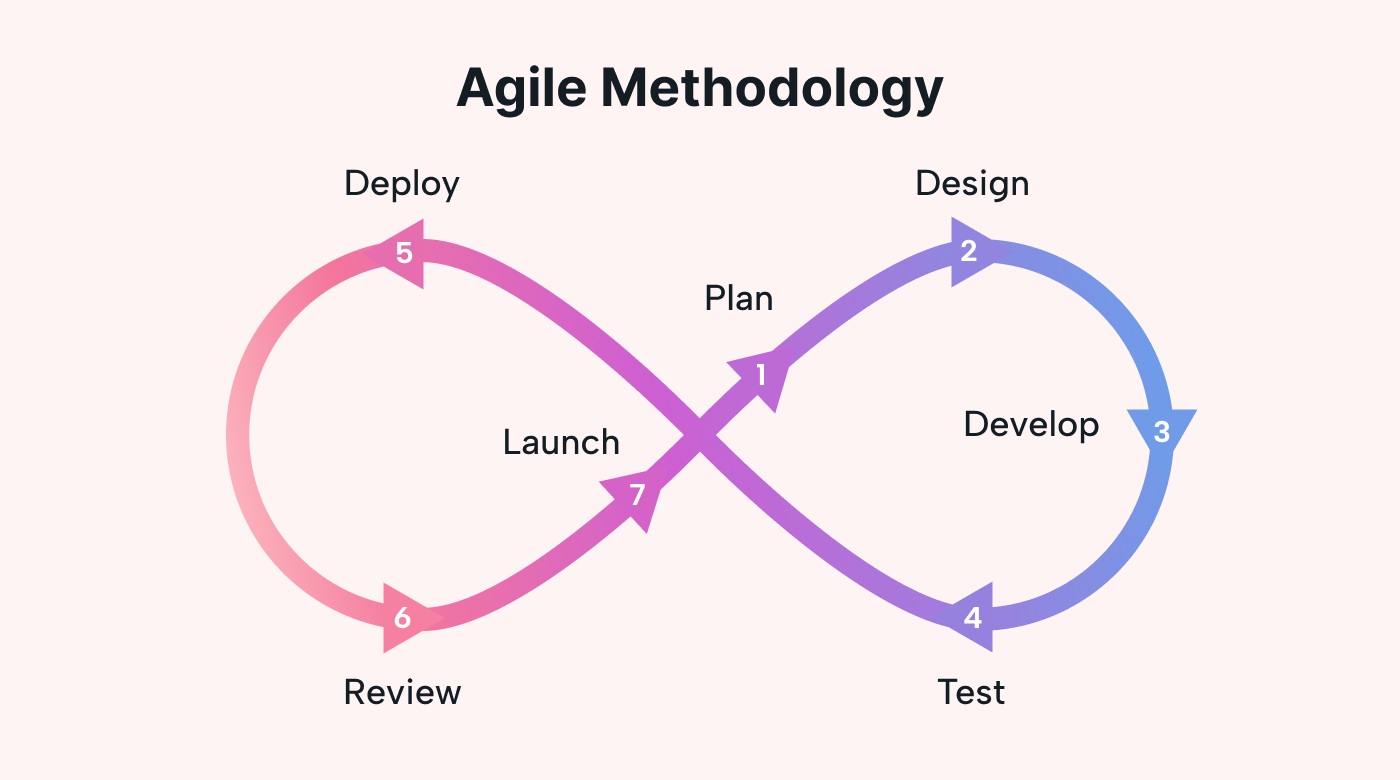 |
At its core, Agile is about empowering teams to work together flexibly while adjusting plans and processes to meet evolving goals.
Implementing Agile methodologies can be challenging, especially for teams that are new to the process. However, many tools and resources are available to help Agile teams adopt and implement Agile practices. Tools include project management software, training programs, and Agile approach guides.
Agile methods include Scrum, Kanban, and Lean, which we’ll review below. But first, a brief history lesson on Agile.
A brief history of Agile
Agile has a long history among software developers. However, the Agile Manifesto formalized it in 2001.
The Agile Manifesto emerged as a response to the limitations of traditional project management. Agile project management encourages collaboration, flexibility, and continuous improvement to provide technical excellence.
When to use Agile methodology?
Agile methodologies are well-suited for projects with dynamic and unpredictable conditions, such as software development.
However, the Agile methodology is also effective when:
- The project scope is ambiguous
- The team doesn’t clearly understand the end product
- The project involves high levels of uncertainty
- The requirements are likely to change over time
- The project requires a flexible approach
It's important to note that Agile isn’t always the best approach for every project.
For example, projects with well-defined requirements and predictable outcomes might better suit a traditional waterfall project management methodology.
What is Scrum methodology?
Scrum is a popular Agile methodology project teams use to manage and complete complex projects. The Scrum framework includes roles, events, artifacts, and values that promote teamwork, communication, and transparency.
The key objective of Scrum methodology is to enable teams to deliver a releasable product increment at the end of each Sprint. A Sprint is a fixed period of work, typically lasting between one to four weeks.
Scrum roles include Product Owner, Scrum Master, and Development Team. Each role has its own responsibilities and tasks.
The framework also includes ceremonies including:
- Sprint Planning
- Daily Scrum (Daily stand-up)
- Sprint Review
- and Sprint Retrospective
These events allow for regular communication and collaboration between team members. While artifacts, such as the product backlog, sprint backlog, and increment, provide transparency and visibility into the project's progress.
By breaking down a large project into manageable pieces, Scrum enables teams to complete work more efficiently.
A brief history of Scrum
Ken Schwaber first introduced Scrum in the 1990s as a framework for managing software development projects within the Agile methodology.
Scrum is now widely used across various industries beyond software development to manage complex projects collaboratively and iteratively.
When to use Scrum methodology?
Scrum is an excellent method when you have a clear and well-defined goal but with changing project requirements. This is because Scrum emphasizes flexibility, iteration, and continuous improvement.
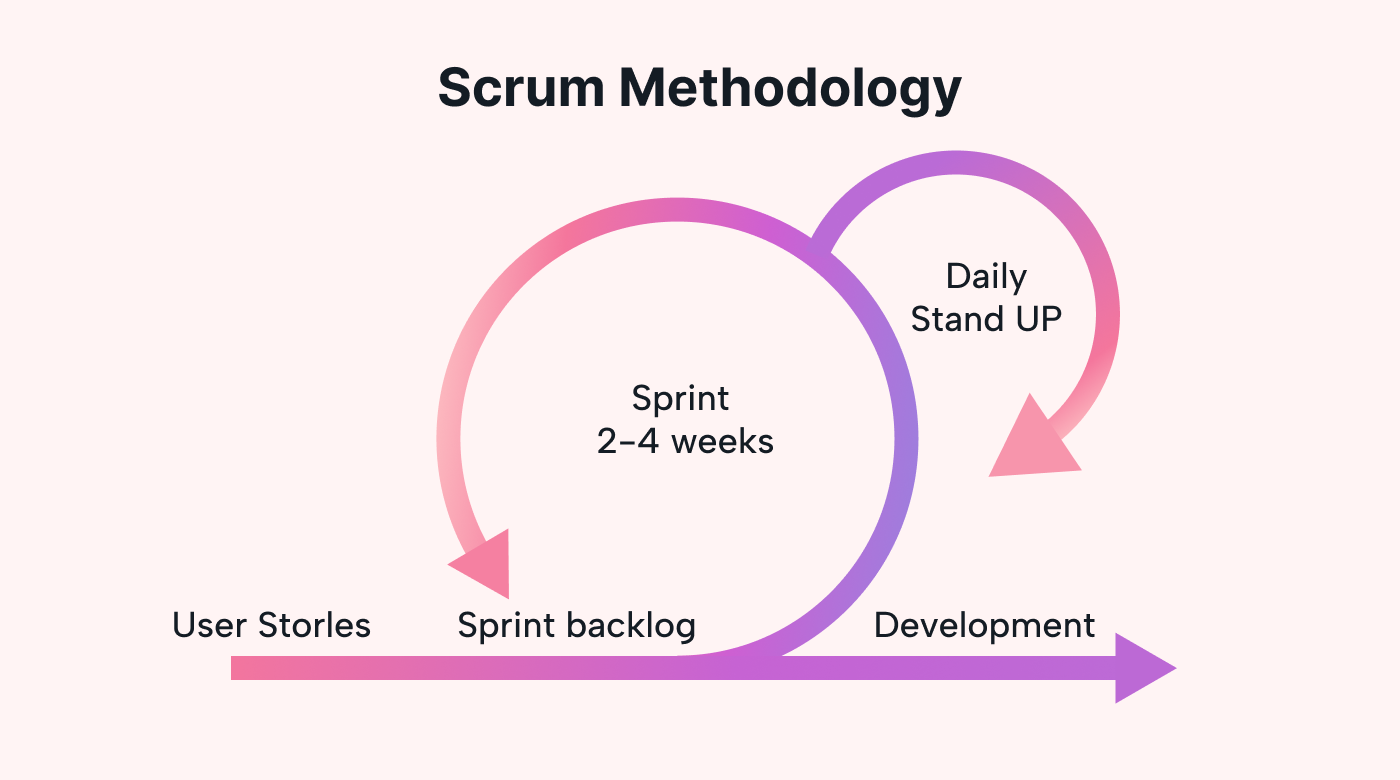 |
Scrum is especially effective for cross-functional teams that need close collaboration and communications, as it provides a framework for regular check-ins and feedback.
Scrum is also a good choice when working on complex or high-risk projects. By breaking the project into more manageable chunks, Scrum helps reduce risk and increase the likelihood of success.
Scrum's regular feedback loops and continuous improvement enable teams to respond quickly to changes and pivot as necessary.
However, Scrum, like Agile, isn’t always the best approach for projects.
Key differences between Agile and Scrum
People often use Agile and Scrum interchangeably, but they are not the same thing. While both methodologies are designed to deliver value to customers in an efficient and iterative way, there are some key differences between them.
Agile is a set of principles and values that prioritize flexibility and collaboration, while Scrum is a specific framework within for implementing those principles, emphasizing transparency, inspection, and adaptation.
Another key difference between Agile and Scrum is the level of structure they provide. You can interpret and apply Agile guiding principles in various ways. Scrum, on the other hand, provides a more prescriptive framework with specific roles and ceremonies.
Ultimately, the choice of methodology will depend on the project's unique characteristics and goals. You should evaluate the strengths and weaknesses of each approach to make an informed decision.
For example, whereas a software development project with high uncertainty or rapidly changing requirements might benefit from an Agile methodology in general, a product development team with a clear, well-defined goal but obscure requirements could specifically use Scrum.
Agile, Scrum, and other methodologies
There are other project management methodologies, each with its own unique approach and benefits.
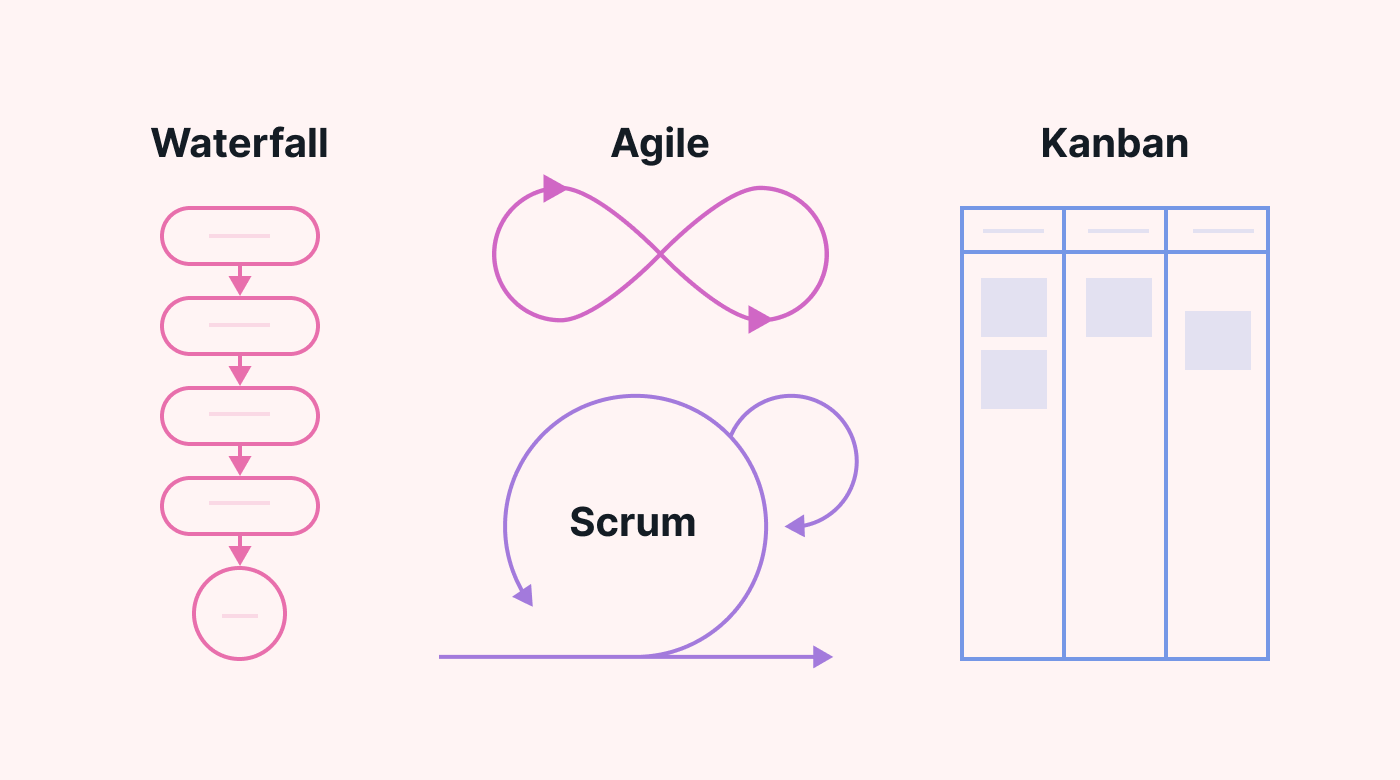 |
Two popular methodologies often compared to Agile are Waterfall and Kanban.
Waterfall methodology stems from traditional project management and is less flexible than Agile. It emphasizes a sequential approach to project development, where you complete each stage of the project to move on to the next. This approach can be useful for projects with well-defined requirements and predictable outcomes, but it may not be suitable for dynamic projects with changing conditions.
Kanban is an Agile methodology that visualizes work, limits work in progress, and manages flow. Teams often use Kanban boards to track the progress of tasks, and focus on completing small, incremental improvements rather than large, time-bound sprints. You can use Kanban alongside other Agile and Scrum methodologies to provide additional flexibility and control.
When comparing Agile, Scrum, Waterfall, and Kanban, the key differences lie in their approaches to project management.
Here's a summary of the key differences between the methodologies:
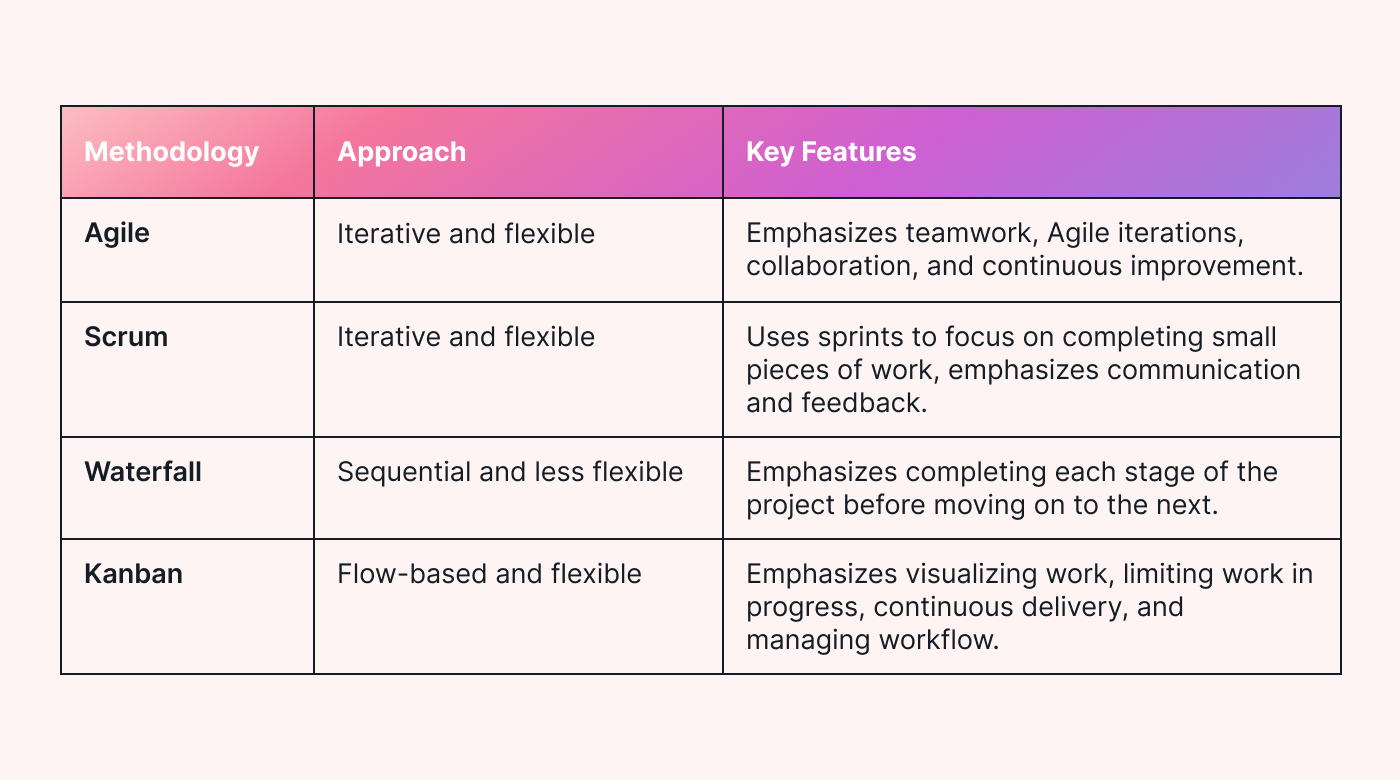 |
Motion makes implementing Agile methodology easy
To help implement Agile methods, you can use a tool like Motion’s automatic project manager.
Motion streamlines the project management process, making it easier for Agile teams to implement Agile methodologies and manage projects efficiently.
Motion provides a Kanban board and list view for teams to manage tasks and projects. Additionally, it automates task and project scheduling, creating the perfect schedule for each team member.
You can also keep track of your time and know exactly how many hours you and your team spend in meetings versus working on tasks.
With Motion, you can keep all project information in one place. Add notes, attachments, and comments to tasks and projects, ensuring everyone is on the same page.
Agile vs Scrum – summed up
Agile and Scrum methodologies offer powerful frameworks for project management, enabling teams to deliver high-quality software in less time.
Agile concentrates on continuous iteration and collaboration. Within agile, Scrum provides a more structured framework for managing projects and delivering business value. Understanding the differences between these methodologies is key to selecting the right approach.
When implementing Agile or, more specifically, Scrum, it's important to have the right tools. Motion can help to automate scheduling, track progress, and stay on top of timelines.
Motion's intuitive interface and powerful features allow you to visualize and manage workflows. With it, you can ensure your team stays on track and delivers high-quality work on time, every time.
Try Motion for free and take your team's process to the next level.

